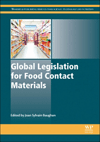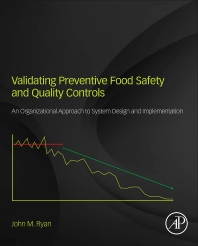"Why be concerned with the nonproduct contact surfaces when the product does not touch them?” This is a question I have heard many times in my many years as a USDA equipment inspector.
Although the criteria for nonproduct contact areas are not as critical as product contact areas, these areas also have the potential to be a source of contamination. The chances of cross-contamination from these surfaces is a reality, as there is a human interface between product and noncontact surfaces
First, we need to look the definitions of product contact surfaces and nonproduct contact surfaces in the ANSI/3-A 00-01-2018, 3-A Sanitary Standard for General Requirements:
- Product contact surfaces: All surfaces which are exposed to the product and from which splashed product, liquids or soil may drain, drop, diffuse or be drawn into the product or onto surfaces that come into contact with product contact surfaces of packaging materials.
- Nonproduct contact surfaces: All exposed surfaces from which splashed product, liquids or other soil cannot drain, drop, diffuse or be drawn into or onto the product, product contact surfaces, open packages or the product contact surfaces of package components.
Create sanitary conditions
The nonproduct surfaces of the equipment must be made of material that will remain corrosion-resistant under the conditions of use. I have found that corrosion can occur between dissimilar metals. Stainless steel is corrosion-resistant under most wet and dry conditions. However, when in contact with aluminum or other dissimilar metal, corrosion can take place at this juncture.
This condition creates micro-harborages that are difficult to clean and create an area for possible cross-contamination. If these harborage points are left unchecked, this could ultimately lead to contamination of product.
During a USDA plant inspection, inspectors are instructed to review not only the product contact areas of equipment, but also the nonproduct contact areas. The nonproduct contact surfaces are inspected to ensure proper construction that won’t promote unsanitary conditions; inspectors look for problems such as poor welds, crevices, hidden areas or difficult-to-access portions of the equipment.
Nonproduct contact areas must be smooth and cleanable. Many potential contamination problems can be avoided by simple routine cleaning of these surfaces.
Areas of concern
In addition, priority must be given to the nonproduct areas that could be subjected to product residues. These areas must be free of all crevices and pockets that will allow accumulation of residues and liquids. A bolted connection here can be a concern, as liquids and residues can be drawn into the crevice created and into the threads by capillary action.
In some cases, these areas are difficult to access; therefore, they tend to be overlooked during routine cleaning. This can lead to the growth of bacteria, mold and other unwanted conditions.
Exposed threads in a nonproduct contact area, which may be subjected to product residues, need to be avoided. This may be accomplished by covering the threads with a cap nut or properly shielding the threaded areas from residues.
Electrical control boxes can be an area of concern for a few reasons. The continuous piano-type hinges on the door of the control cabinet need to be avoided, as these areas have crevices that cannot be cleaned.
Another area of concern is the method of mounting the control box or cabinet. These control boxes should be placed on stand-offs to provide at least 1 inch of clearance between the box and the mounting surface. This will allow for inspection and proper cleaning of this area.
The design, maintenance and cleaning of equipment nonproduct contact surfaces are all important parts of maintaining the integrity of your processing operations.
The ANSI/3-A 00-01-2018, 3-A Sanitary Standard for General Requirements is available for purchase from 3-A Sanitary Standards Inc.; visit www.3-a.org for more information.





